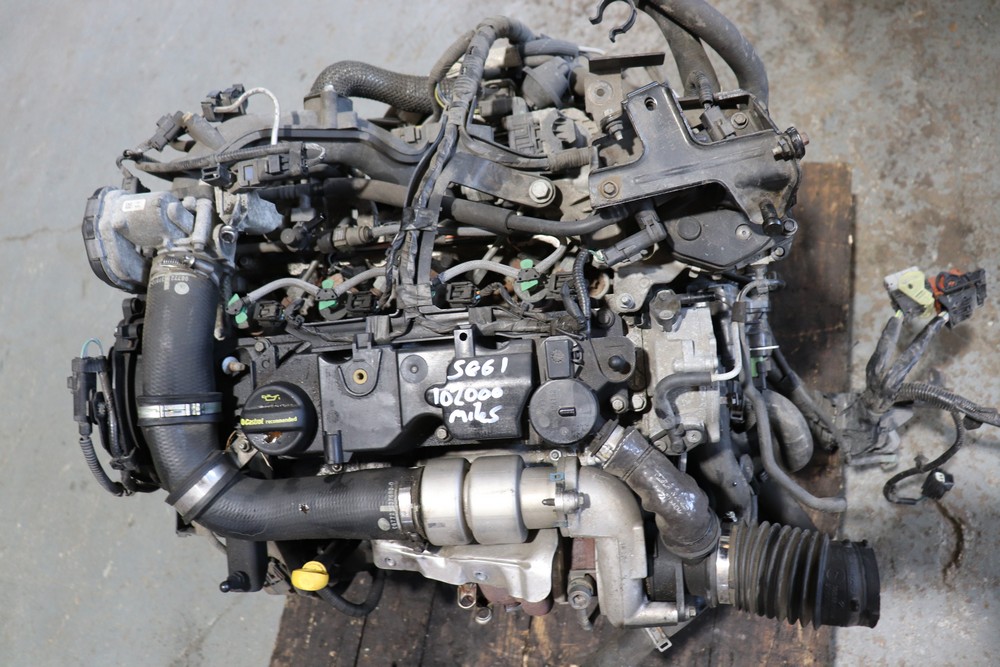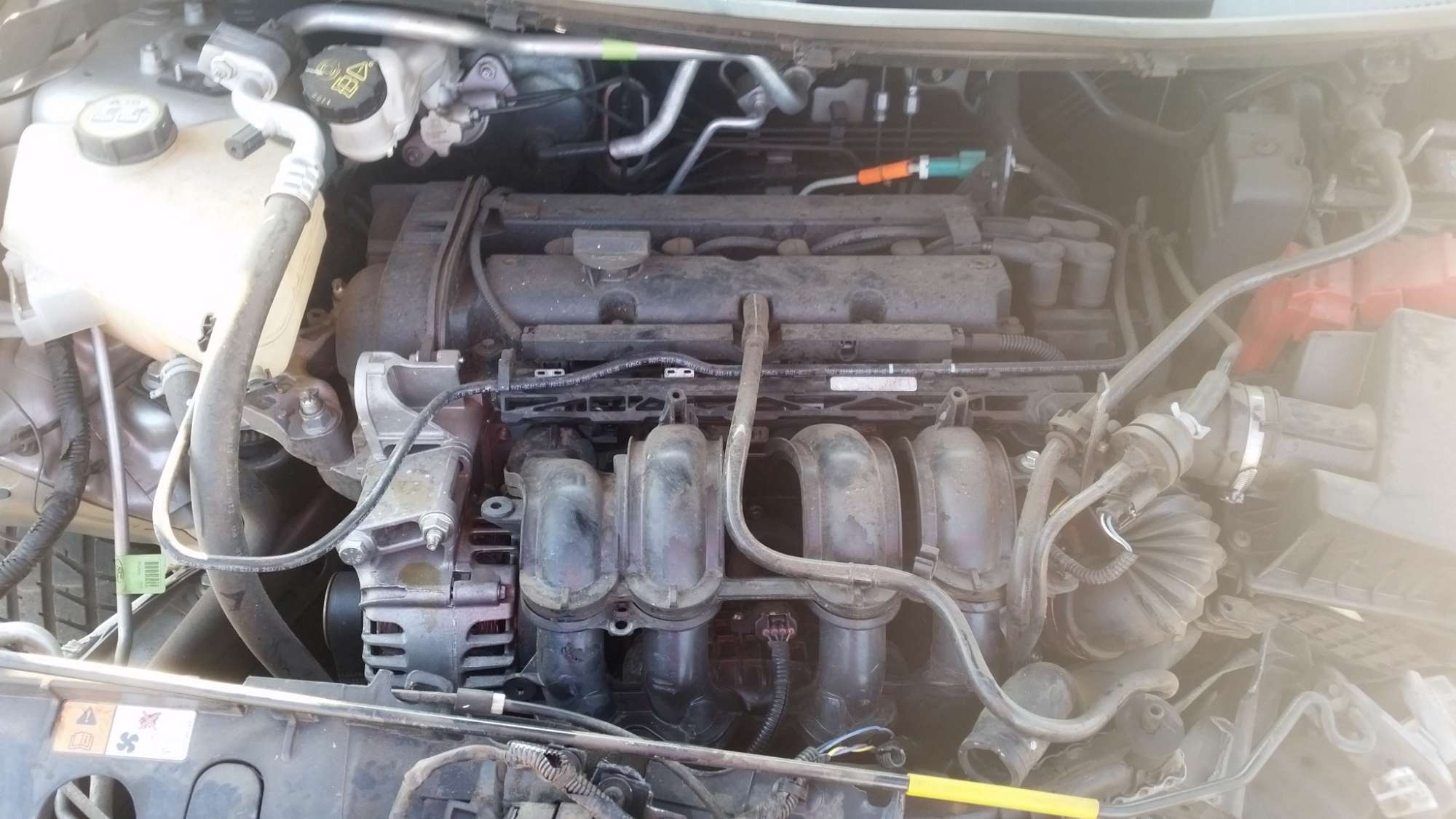Exploring the Benefits of a High-Performance Ford Fiesta Engine
Exploring the Benefits of a High-Performance Ford Fiesta Engine
Blog Article
The Future of Engines: Innovations Driving Lasting Power Solutions
As the vehicle market navigates the critical shift towards sustainability, the future of engines is progressively defined by groundbreaking developments. Electric engine innovations, alongside appealing growths in hydrogen gas cells and biofuels, are reshaping the landscape of power solutions. The development of hybrid systems additionally complicates this development, offering both opportunities and difficulties to lower discharges effectively. Coupled with the assimilation of synthetic intelligence in engine design, these technical strides raise vital inquiries about their lasting stability and effect on conventional standards. What might this indicate for the industry and customers alike?
Electric Engine Dope
The evolution of electrical engine advancements indicates a crucial change in the aerospace and vehicle sectors, driven by the immediate requirement for sustainable options to nonrenewable fuel sources. This shift is defined by significant improvements in battery modern technology, power electronic devices, and electrical motor design, which jointly improve the efficiency and efficiency of electric engines.
Recent developments have caused the development of lighter, much more energy-dense batteries, such as lithium-silicon and solid-state batteries, which promise longer ranges and much shorter billing times. In addition, enhancements in electrical motor effectiveness, such as the usage of long-term magnets and progressed cooling down systems, make it possible for electrical engines to operate properly under differing conditions. These enhancements not just improve automobile performance but also add to a decrease in general power consumption.
Additionally, the integration of innovative software program algorithms has enhanced power administration in electric cars, permitting for regenerative braking and anticipating billing techniques. As suppliers increasingly welcome electric propulsion, the aerospace and automotive sectors are experiencing a standard shift towards greener technologies. This development not just satisfies governing needs but also lines up with consumer preferences for eco pleasant transportation options, strengthening electric engines as a keystone of future sustainable mobility.
Developments in Biofuels
As the vehicle and aerospace markets increasingly prioritize lasting energy sources, advancements in biofuels become a corresponding service to electrical engines. Biofuels, originated from organic products such as crops, waste, and algae, offer an ingenious opportunity for reducing greenhouse gas exhausts and reliance on fossil fuels.
Recent research has concentrated on boosting the efficiency and sustainability of biofuel manufacturing. Second-generation biofuels utilize non-food feedstocks, reducing competitors with food supply and lowering ecological impact. In addition, improvements in synthetic biology have made it possible for the engineering of microorganisms to generate biofuels better, bring about higher yields and reduced production prices.
Furthermore, the advancement of drop-in biofuels permits seamless assimilation into existing framework, making it possible for a smoother change for markets commonly dependent on fossil gas. ford fiesta engine. These gas can be made use of in current engines without adjustments, facilitating their fostering across different sectors
Investments in biofuel technology, together with supportive plans, are crucial to drive innovation and scalability. As the international area seeks to combat environment change, biofuels provide a practical, immediate remedy that straightens with the overarching objective of sustainability in transportation and aviation.
Hydrogen Gas Cell Modern Technology
An expanding number of researchers and business are discovering hydrogen fuel cell innovation as a sensible option to traditional source of power in transport and energy systems. This modern technology transforms chemical energy from hydrogen into electrical power through an electrochemical response, with water as the only result, making it an eco-friendly alternative.
The core of hydrogen fuel cells is the gas cell pile, where hydrogen particles are split right into electrons and protons. The circulation of electrons produces electrical power, while protons move with a membrane layer to integrate with oxygen from the air, creating water. This process leads to high performance and reduced emissions, positioning hydrogen fuel cells as an essential gamer in the shift to lasting power.
Substantial innovations have been made in boosting the longevity and performance of gas cells, together with lowering expenses with ingenious manufacturing methods. Additionally, the advancement of hydrogen manufacturing approaches, such as electrolysis powered by renewable resource resources, enhances the sustainability of the general system. As framework for hydrogen refueling expands and manufacturing techniques come to be much more effective, hydrogen gas cell modern technology holds terrific go to this website pledge for decarbonizing numerous industries, including sturdy transportation and stationary power generation.
Hybrid Equipments and Their Influence
Hybrid systems represent a substantial evolution in sustainable engine innovation, merging standard internal burning engines with electrical propulsion to enhance power performance and decrease emissions (ford fiesta engine). This twin approach permits vehicles to make use of both source of power, allowing better flexibility in power usage and reducing dependence on fossil gas

In addition to ecological advantages, hybrid systems provide consumers a viable transition towards totally electrical lorries. They reduce array anxiety by combining the convenience of gasoline with the advantages of electric propulsion, making them an eye-catching option for a bigger audience.
The Role of AI in Engine Design
Leveraging their website innovative formulas and device understanding methods, the automotive industry is increasingly incorporating synthetic knowledge (AI) into engine design processes. AI improves the effectiveness and effectiveness of layout by evaluating huge datasets to recognize ideal configurations and efficiency specifications. This ability enables designers to mimic various operating conditions and forecast engine habits under several situations, significantly lowering the time and expense connected with conventional prototyping methods.
In addition, AI helps with the growth of advanced materials and burning procedures tailored for sustainability. By enhancing gas effectiveness and reducing exhausts, AI-driven designs straighten with global efforts focused on lowering the carbon footprint of vehicle engines. Artificial intelligence formulas can also anticipate maintenance needs, resulting in improved reliability and durability of engine elements.
Moreover, AI contributes in the assimilation of electrification technologies, such as crossbreed systems, where it can maximize battery administration and power recovery procedures. As the market moves towards more lasting power services, the role of AI in engine layout ends up being increasingly essential, driving advancement and enhancing the performance of future engines. Eventually, the cooperation in between AI and engine design advertises a new age of smarter, cleaner, and a lot more efficient automotive modern technologies.

Conclusion
In final thought, the future of engines is being shaped by a convergence of cutting-edge technologies that focus on sustainability. Electric engine improvements, biofuel developments, hydrogen gas cells, and crossbreed systems collectively contribute to a substantial reduction in emissions and environmental influence.
Electric engine developments, alongside encouraging advancements in hydrogen gas cells and biofuels, are improving the landscape of power options. In addition, renovations in Visit Website electric motor performance, such as the use of long-term magnets and advanced cooling down systems, make it possible for electric engines to operate properly under differing conditions. By optimizing gas performance and minimizing emissions, AI-driven designs straighten with global initiatives aimed at minimizing the carbon footprint of auto engines. As the market moves towards more lasting power remedies, the duty of AI in engine design ends up being significantly essential, driving technology and enhancing the efficiency of future engines. Electric engine innovations, biofuel advancements, hydrogen gas cells, and crossbreed systems jointly contribute to a significant decrease in discharges and environmental effect.
Report this page